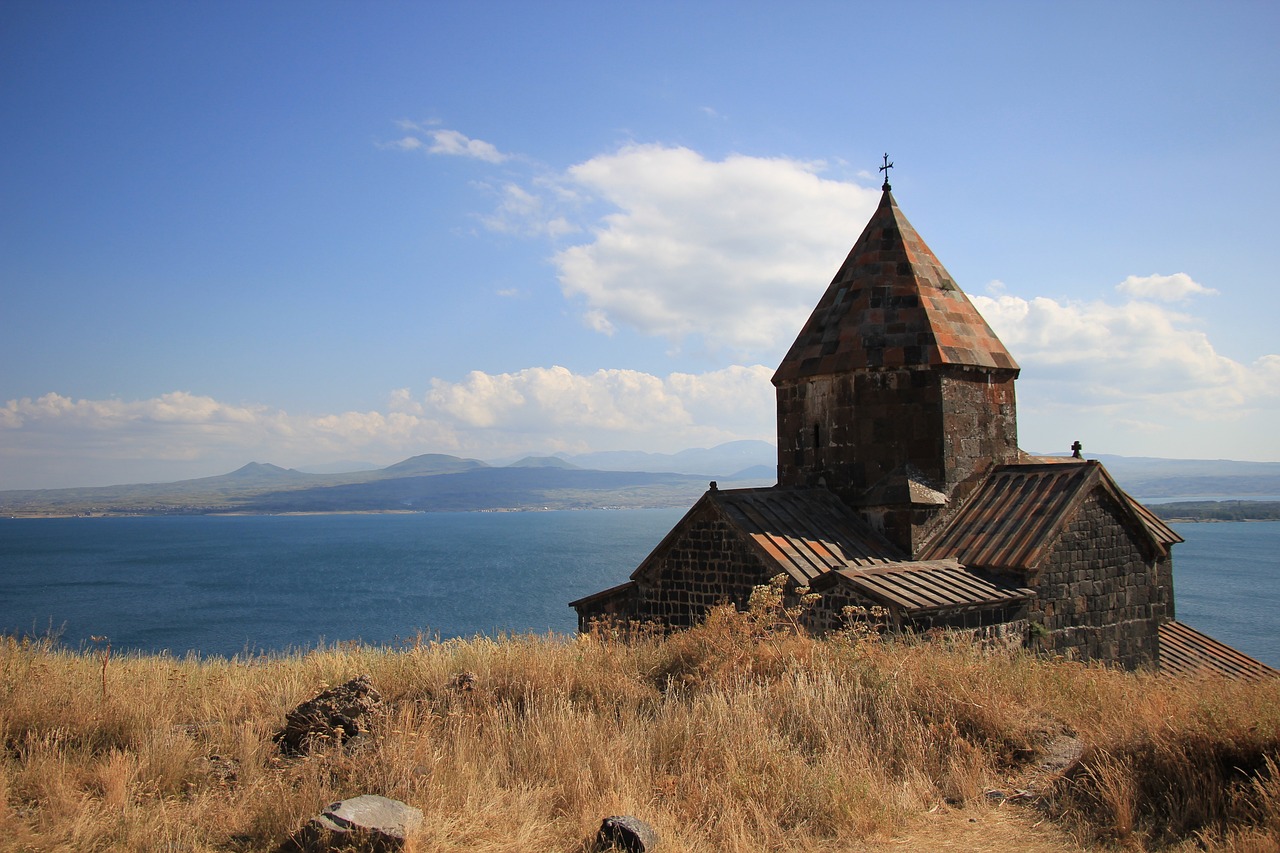Armenia, a captivating country nestled in the South Caucasus, boasts a rich tapestry of history and culture, reflected in its numerous historical sites. From ancient churches and monasteries to archaeological wonders, each location tells a unique story of the nation’s past. This step-by-step guide is designed to help travelers navigate their journey through Armenia’s remarkable heritage, providing practical tips and insights to ensure a meaningful and enriching experience while visiting these extraordinary sites. Whether you’re a history enthusiast or a curious traveler, this guide will equip you with everything you need to explore Armenia’s fascinating historical landscape.



Top 10 Must-Visit Destinations in Armenia – Travel Video
Research Historical Sites
Research historical sites in Armenia by starting with renowned locations that showcase the country’s rich heritage. Explore the ancient temples of Garni, which are famous for their stunning Hellenistic architecture and breathtaking views. Visit the Geghard Monastery, a UNESCO World Heritage site, carved directly into the mountain rock, known for its incredible acoustics and historical significance. Investigate the ruins of the ancient capital, Artashat, which offers insight into the early Armenian kingdom and its strategic importance. Identify additional sites such as the cathedral of Echmiadzin and the memorial complex at Tsitsernakaberd, which honor the Armenian Genocide.
Create a list of sites that capture your interest based on factors like historical significance, accessibility, and personal preference. Prioritize sites that resonate with your historical curiosity and logistical considerations. Note down any potential challenges, such as travel restrictions or physical accessibility, to ensure a smooth visit. Consider reading historical accounts or visiting local museums to enrich your understanding of each location. Engage with local guides or historical experts when possible to gain deeper insights. By compiling a thoughtful list, you will enhance your exploration of Armenia’s historical landscape.
Plan Your Itinerary
Organize your list of sites by geographical proximity to create a logical route for your visits. Visualize a map of the area and identify clusters of attractions that are within a short travel distance from one another. Prioritize the sites you most want to see and mark them according to their locations. Once you have grouped nearby sites, estimate how much time you will spend at each location, taking into account activities such as guided tours, exhibits, or leisure time for exploration. This will help you determine the order of your visits and how long your overall itinerary will be.
Calculate the travel time between each site, considering the mode of transportation you will use, whether it’s walking, public transit, or driving. Factor in additional time for meals and rest breaks, ensuring that you don’t over-schedule your day. Aim for a balance that allows you to enjoy each location without feeling rushed. If possible, allocate some buffer time for unexpected delays or spontaneous discoveries along the way. By carefully planning your itinerary with these elements in mind, you will enhance your travel experience and make the most of your trip.
Arrange Transportation
Determine your transportation method when planning your trip to Armenia. Consider renting a car if you prefer the flexibility of setting your own schedule and exploring at your own pace. Use rental services available at Yerevan’s Zvartnots International Airport or in the city center. Choose a vehicle that suits your travel needs, keeping in mind that some rural areas may require a four-wheel drive. For an alternative, hire a private driver who can take you to various destinations while providing local insights. This option is especially useful if you want to visit remote historical sites like Geghard Monastery or the Temple of Garni, which are not easily accessible by public transport.
Utilize public transportation if you are looking for a cost-effective way to get around. Familiarize yourself with bus and minibus (marshrutka) routes available in major cities, as they can connect you to many key locations. Check schedules and plan your trips accordingly, but be mindful that public transportation may not reach more secluded destinations. For those sites, such as the ancient city of Ani or the monasteries in the Tavush region, consider combining public transport with a taxi or rideshare service for the final leg of your journey. Ensure you have reliable transportation options mapped out to maximize your exploration of Armenia’s rich cultural heritage.
Prepare for Your Visit
Research the history and significance of each site you plan to visit. Dive into reliable sources such as books, articles, or official websites to gain insight into the cultural and historical context. Understanding the background will enrich your experience and help you appreciate the site more fully. Take notes on interesting facts or anecdotes that you can share during your visit or with fellow travelers.
Pack necessary items to ensure a comfortable and enjoyable visit. Bring a camera to capture memorable moments, and wear comfortable walking shoes to navigate the terrain easily. Hydration is key, so carry a bottle of water to keep yourself refreshed. Before you head out, check the opening hours of each site and any entry fees that may apply. This will help you plan your day effectively and avoid any unexpected closures or expenses.
Respect Local Customs
When visiting historical sites, demonstrate respect for local customs and traditions. Follow all guidelines provided at the site, which may include restrictions on photography, designated walking paths, or areas that are off-limits to visitors. Dress appropriately by wearing modest clothing, especially in religious or sacred sites. For instance, when visiting temples in Southeast Asia, cover your shoulders and knees, and remove your shoes before entering. Maintain a quiet demeanor and speak softly, as many historical sites are places of reflection and reverence. This not only shows respect for the site but also enhances your own experience by allowing you to appreciate the significance of the location fully.
Observe the behavior of local visitors and adapt accordingly. If you see others bowing their heads or performing rituals, follow their lead while being mindful of their customs. When inside places like cathedrals or shrines, refrain from loud conversations and keep your phone silenced. In places such as the historic city of Kyoto, take your time to appreciate the serene atmosphere and avoid rushing through the sites. Always remember that these locations hold deep cultural meaning, and your respectful behavior contributes positively to the overall experience for both yourself and other visitors.
Final Tips for Exploration
In conclusion, exploring the historical sites of Armenia offers a unique opportunity to immerse yourself in the nation’s vibrant past. By taking the time to research and plan your visit, arranging reliable transportation, and embracing local customs, you can enhance your experience and gain a deeper appreciation for Armenia’s cultural heritage. Whether you’re wandering through ancient monasteries, admiring architectural marvels, or engaging with local traditions, your journey will undoubtedly enrich your understanding of this fascinating country. Happy travels!
Maximize Your Experience
Top Attractions and Hidden Gems
Yes, Armenia is home to several UNESCO World Heritage Sites that are definitely worth visiting. Here are a few notable ones:
- Temple of Garni – This ancient Hellenistic temple, dating back to the 1st century AD, is the only Greco-Roman colonnaded building in Armenia and offers breathtaking views of the surrounding landscape.
- Geghard Monastery – A UNESCO site since 2000, Geghard is a stunning medieval monastery carved into the rock. It features remarkable architecture and is set in a beautiful gorge.
- Monastery of Haghpat and Monastery of Sanahin – These two 10th-century monasteries are celebrated for their unique architectural styles and the role they played in the development of Armenian medieval architecture and literature. They are located in the Lori Province and were designated as a UNESCO World Heritage Site in 2000.
- Etchmiadzin and the Archaeological Site of Zvartnots – This site includes the mother church of the Armenian Apostolic Church, Etchmiadzin Cathedral, and the ruins of the Zvartnots Cathedral, showcasing the evolution of Armenian ecclesiastical architecture.
These sites not only represent significant historical and cultural heritage but also offer visitors a glimpse into Armenia’s rich history and stunning landscapes.
Mount Ararat holds significant cultural and historical importance in Armenian culture and heritage. It is often considered a national symbol of Armenia, representing the Armenian identity and history. The mountain is famously associated with the biblical story of Noah’s Ark, which is believed to have come to rest on its slopes after the Great Flood, making it a potent symbol of survival and resilience for Armenians.
In addition to its biblical significance, Mount Ararat is prominently featured in Armenian art, literature, and folklore. It frequently appears in paintings, poems, and songs, symbolizing the homeland and the aspirations of the Armenian people. Despite being located in present-day Turkey, Mount Ararat remains a central element of Armenian national consciousness and pride. Its image can be found on the Armenian national emblem and currency, further solidifying its status as a touchstone of Armenian cultural identity.


I actually visited Armenia last year without any planning, and it was a disaster! I missed out on so many sites because I didn’t know where to go. This guide is super helpful for future travelers. Plan your itinerary folks, it makes a world of difference!
Totally get that! Sometimes spontaneity can lead to unexpected adventures, but planning can help you maximize your time. Glad you found the guide useful!
Is it really that important to respect local customs? I mean, it’s just a visit, right? What’s the big deal about dressing appropriately or following local traditions?
Respecting local customs is crucial when visiting any country. It fosters goodwill and shows appreciation for their culture. Plus, you might learn something new and have a richer experience!
Does anyone have tips for finding local guides? I heard they can really enhance the experience at places like Garni Temple and Geghard Monastery. Any recommendations?
Great question! Local guides can definitely add depth to your visit. You might try checking platforms like GetYourGuide or even local Facebook groups for recommendations. Happy exploring!
For transportation, I used the Yandex Go app to book rides. It was super convenient and helped me get around without any hassle. Highly recommend it for anyone visiting!
Awesome suggestion! Yandex Go is a great way to navigate the city. Thanks for sharing; I’m sure many will find it helpful.
I’m really interested in the food culture in Armenia. Any tips on what to try while visiting the historical sites?
Definitely try the khorovats (Armenian barbecue) and dolma! Many sites have local eateries nearby where you can sample authentic dishes. Don’t miss out on the lavash bread too!
Thanks for sharing your experience! Khor Virap is truly stunning, and those views are unbeatable. Good tip on the shoes—comfort is key when exploring! 😊
I’m planning a trip next summer! Any must-see lesser-known historical sites you guys recommend? Would love to avoid the touristy spots!
Absolutely! Check out the ancient site of Teymuraz, and the picturesque village of Jermuk has some hidden gems. Both offer unique experiences away from the crowds!
What about the best time of year to visit? Is there a season that’s better for exploring historical sites?
Spring (April to June) and fall (September to October) are ideal. The weather is pleasant, and the landscapes are beautiful. Plus, fewer tourists during these times make for a more enjoyable experience!
I just got back from Armenia and followed this guide! The best part was visiting the ancient monastery of Khor Virap. The view of Mount Ararat from there is breathtaking. Just make sure to wear good walking shoes because the paths can be a bit rocky. Totally worth it though! 🎒